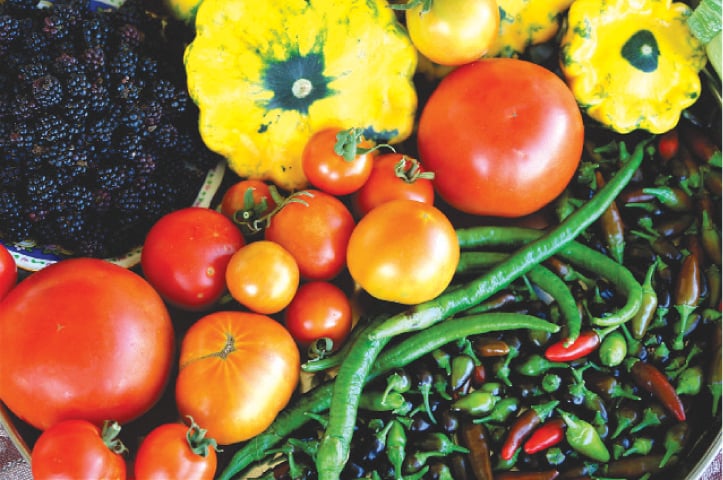
Q. I want to do organic farming on my land in Jhang Sadar, Central Punjab. I want to plant forest trees, nitrogen-fixing shrubs and flowers to attract bees, and an orchard. I do not understand how to design a proper layout, planting distances between trees so that they get enough sunlight, what kind of flowers to grow, and where to plant them. Please help me start this project.
A. How exciting! You will need lots of patience and to do lots of research. When planting trees, the distance apart varies from species to species, but a basic guide is that small trees should be planted at least 10ft apart, medium height ones and trees that spread out at least 20ft apart, and tall ones anywhere from 30ft to 60ft apart. Search the requirements for each individual species that you intend to plant and plan accordingly. Browse my previous columns on the internet for information on creating food forests, edible gardens and gardens beneficial for insects, birds and the environment in general. You could get back to me with specific questions. There are no shortcuts to achieving first class results and it takes at least 3-5 years to achieve even the basic kind of natural balance necessary for long term success. Dedicate yourself to the joys of creating the paradise you envision and, with perseverance, it will eventually all come together, while you learn new things at each step.
Q. I have a Madras tamarind tree (jungle jalebi) at my house in DHA, Karachi. Like every year, this year too, the yield is good. But in many of the fruit pods, small white insects are over-ripening the pods and making them inedible. The insects look like small pieces of thread. Can you tell me which insect it could be and how to control it without using pesticides harmful for the environment?
A. These are the larvae of fruit flies, which are notoriously difficult to control without resorting to toxic sprays, which I do not advocate here. You can try some natural remedies. Firstly, garden/orchard hygiene must be enforced by removing all infected fruits, including any that have fallen on the ground, and disposing of them well away from your garden. Fallen leaves and any other plant debris around the tree/s should also be disposed of. Do not add this infected material to your compost bin/heap. In late autumn, apply grease bands — you can make 4-inch wide strips out of jute sacking, heavily coated with grease or Vaseline — and tie these bands around the tree trunk, 2-3 feet above the ground, and below the lowest branch. Female fruit flies (these are flightless) that have bred in the area beneath the tree, will automatically try to crawl up the tree trunk to lay their eggs in the developing fruit and get stuck in the grease band. Changing the grease band once a month, from late autumn through until mid-spring, should keep future fruit crops safe from infestation.
All your gardening queries answered here
Q. I cultivate many organic vegetables at my farm in Karachi but these are often attacked by different varieties of pests. I am trying to grow lavender spicata as it is a pest repellent and also intend to extract oil from these lavender plants. Can you advise me on how to successfully grow lavender from seed?

A. Lavender is not suitable for cultivation as a field crop in the Karachi area, as the climate is not suitable. Instead, try growing nasturtiums in winter and tagetes in the hotter months of the year to aid in pest control.

Q. I have a 4ft tall sago/kungni palm in my front garden, in Lahore. Its fronds have become yellow with a waxy coating. Can you suggest a remedy for this?
A. Your kungni palm is infested with armoured scale insects. These are extremely difficult to eradicate as the waxy coating on their armoured bodies repels most types of spray. The following link provides some advice: Dawn-ePaper | Nov 17, 2013 | Natural bug control

Q. My son brought a packet of dried anjeer /figs from Saudi Arabia. They are unbelievably sweet, soft, white and big. Can these be grown in DHA, Karachi using the seeds extracted from the dried ones?
A. Figs, of all kinds, grow extremely well in Karachi but they are generally grown from cuttings, not seed. The problem with dried figs brought over from Saudi Arabia is that they have probably undergone a commercial drying process, which will have killed off the seeds. You can try growing them if you like, but nothing is liable to germinate.
Please continue sending your gardening queries to zahrahnasir@hotmail.com. Remember to include your location. The writer does not respond directly by email. Emails with attachments will not be opened
Published in Dawn, EOS, May 22nd, 2022














































Dear visitor, the comments section is undergoing an overhaul and will return soon.